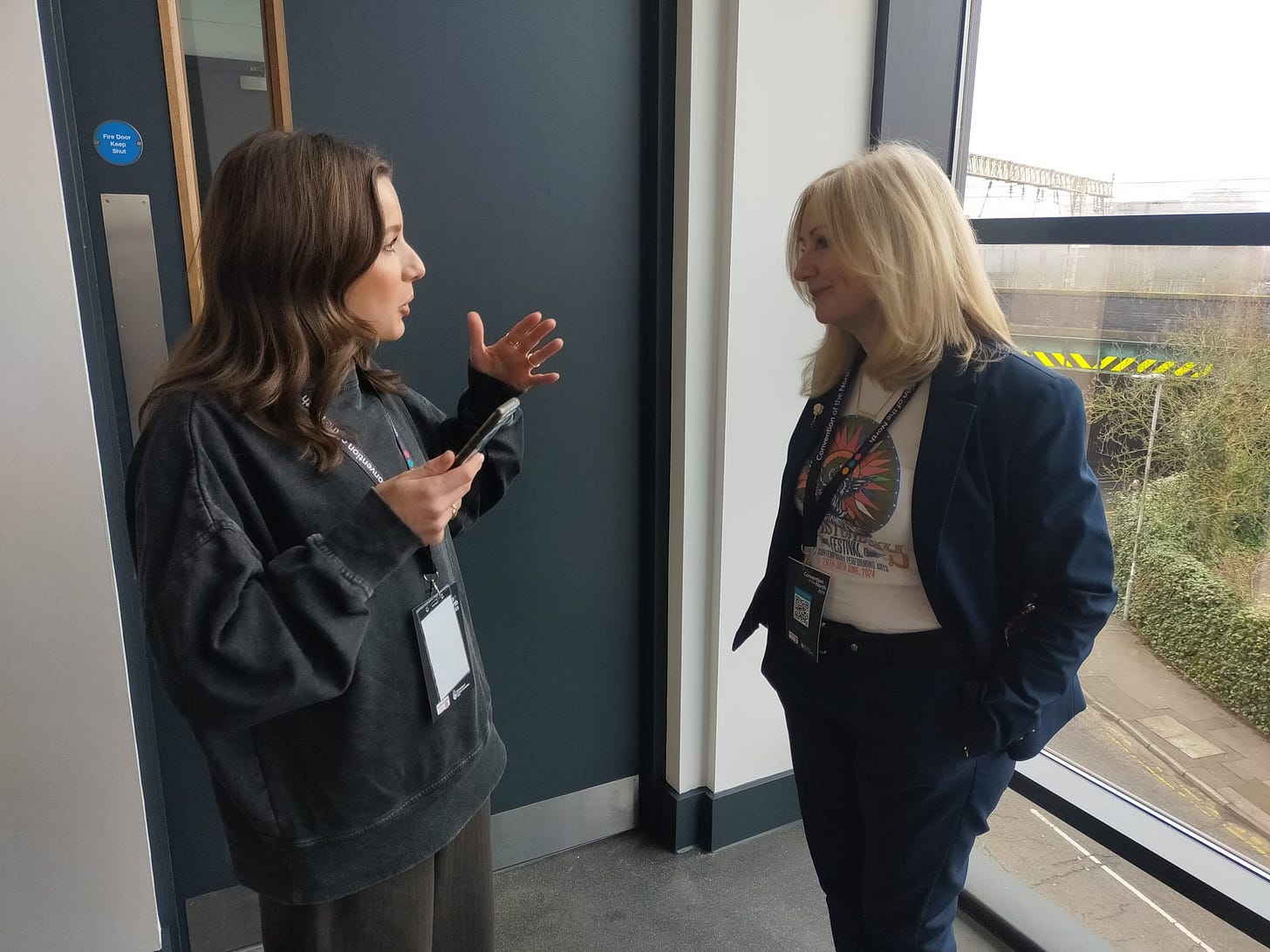Hitting the right note with audio to enrich journalism
Plus: AI-assisted story distortion and winning on LinkedIn
Good afternoon,
And a happy Wednesday, as we march into March(!). Something a little different for this week’s digest, sharing some thoughts on using audio in journalism.
You might expect me to be writing about podcasts, and yes absolutely they are audio, but this is more about the humble voice recorder app and how it can help build trust and transparency and enrich your writing.
I spent last Friday at the Convention of the North event in Preston, back in the press room and in the media mix. An odd event to cover as it straddles somewhere between local-national when it comes to stories.

My shorthand still works, but it’s rusty, so in environments like this I thought I’d give the audio interview a go instead. A few reflections from using it
People are more natural. There’s a lot to be said for seeing the whites of a politicians eyes while interviewing them, but I found them on the whole to be more candid and natural while having a phone (audio recording) in front of them rather than a camera (or smartphone pointed at them). They aren’t trying to perform.
It builds trust and transparency. The clips were easy to put into Soundcloud and embed within the stories I was doing. It brings the voices off the screen and into people’s headphones/wherever they are reading. And they can hear your voice as a journalist too, those nuances in how questions are asked and answered that perhaps doesn’t quite come through in straight quotes. In a world of increasing AI-tools usage for creating content (the irony being of course the transcribing tools I am about to mention are better because of AI!) then showing as a journalist you’ve been doing the fundamentals of asking questions to those in power will become increasingly important to stand out.
Transcribing tools have upped their games. There’s loads out there - I’m sure you all have a preferred one - what I noticed was Substack’s in-house tool for audio offers a very good transcription of any audio notes. Turning around copy from the event was straightforward utilising the quotes secured.
Added content. As the Convention of the North died down, then Zoë Grünewald and I reflected on what we’d seen take place during the day. It’s nothing special, it’s us stood in a corridor having a conversation, but it gives insight and it is clear we are out there at the event - not sat behind a screen.
How are you using audio in your storytelling and journalism? Feel free to let me know and also any tips for apps or tools to make use of.
And now to the digest for this week, some quick-fire links which have come across my timeline…
How to Check Whether AI Assistants Are Distorting Your News Stories - Clare Spencer - Clare looks through an interesting study published by the BBC recently on the impact AI assistants are having on AI-assisted news production. Often these inaccuracies aren't in the top-line of a story, they are in the 17th par, but that means they are still ingested for the next iteration of the story and on it goes...
IN 2025: What content gets best engagement on a LinkedIn page? - Dan Slee - there’s increasing focusing being put on LinkedIn, especially as a place to communicate with a more professional, business focused, audience. Not surprisingly, as with Facebook and other platforms, link-posting tends to die a death and it is native content - particularly the use of the carousel format within the app which is breaking through as Dan shows from his research into performance on a number of accounts and pages.
That’s all for this week’s digest, as ever if you have anything you think I should be featuring then drop me a line on ed@almaonline.co.uk
Hope the rest of your work goes well. Keep going.
Ed




